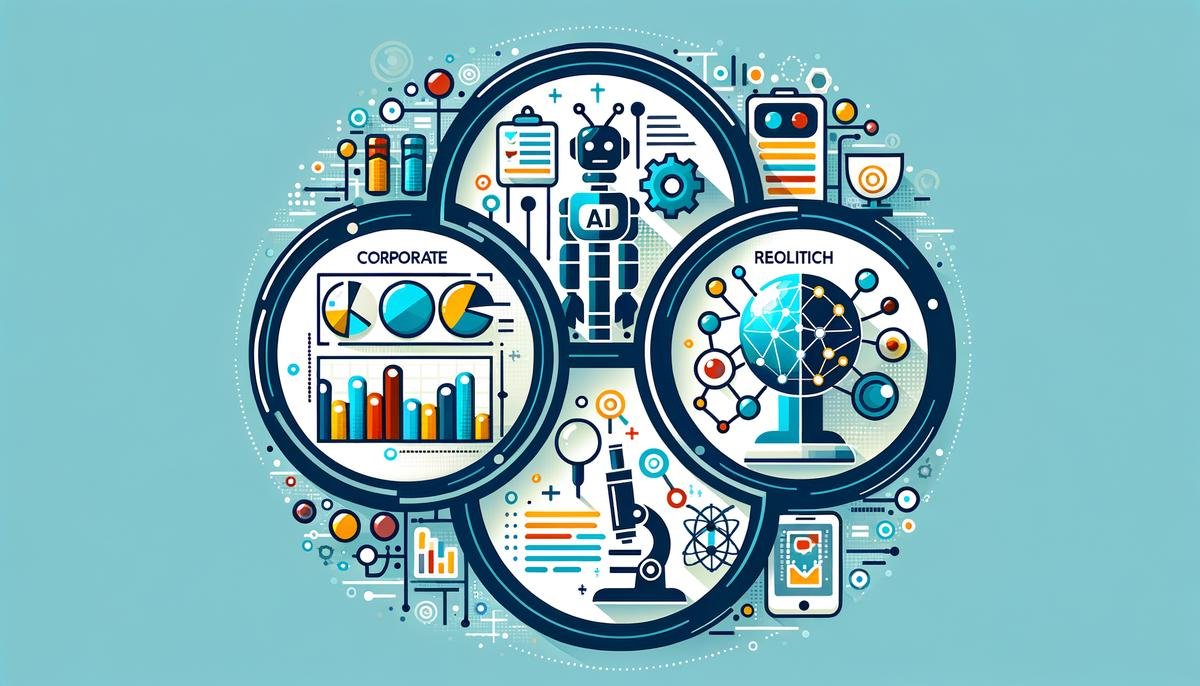IBM’s Project Debater: An Overview
IBM’s Project Debater is an AI system designed to engage in human-like debates. Developed at IBM’s Research Lab in Haifa, Israel, it operates on the Watson cognitive computing platform. The system uses a database of 300 million documents to construct arguments and counterarguments on various topics in real-time.
Project Debater’s debate process involves:
- Listening to the debate resolution
- Determining its stance
- Scanning its database for relevant information
- Structuring information into a coherent presentation
- Offering arguments with supporting evidence
The system’s rebuttal process involves understanding and countering the opponent’s points to strengthen its position. Natural language processing (NLP) enables Project Debater to analyze and understand components of the opponent’s speech.
While Project Debater shows promise in logical presentations and even occasional humor, it can struggle with nuanced expression like sarcasm or irony. The system has demonstrated its capabilities in structured debates on topics such as subsidized preschool and telemedicine.
“Project Debater serves as a technological advance in AI-human interactions, offering insights into constructing valid arguments and enriching discussions.”
Its development marks a milestone in AI, showing how machines can be trained to argue and interact in ways that traditionally required human intelligence and intuition.
Technical Aspects and Innovations
Project Debater’s technical prowess is anchored in sophisticated innovations, predominantly in neural networks, natural language processing (NLP), and an advanced Argumentative Content Search Engine.
Key Technical Components:
- Neural Networks: Facilitate automatic speech recognition (ASR) and text-to-speech (TTS) functionalities
- Natural Language Processing: Enhances ability to parse and analyze speech components
- Argumentative Content Search Engine: Blends rule-based systems and advanced statistical approaches
Project Debater’s auto-generated speeches involve clustering information into themes and organizing them logically. The AI’s speech delivery is designed to mirror human-like conversational tones, though it occasionally falls short in emulating expressive nuances.
The system’s listening comprehension relies on deep neural networks to dissect opponents’ arguments and quickly formulate counter-arguments. Human dilemma modeling uses knowledge graph models to form principled arguments that reflect ethical and practical considerations typical in human debates.
These technical aspects collectively form a robust AI system capable of engaging in high-level debates, showcasing AI’s growing ability to assist in decision-making processes.

Performance and Limitations in Debates
Project Debater’s performance in live debates highlights both its strengths and limitations. The system excels in formulating coherent arguments, presenting factual evidence, and maintaining a structured presentation. However, it faces challenges in engaging dynamically with human opponents and replicating the nuances of human rhetoric.
Strengths:
- Effective articulation of key arguments
- Data retrieval and factual consistency
- Well-organized evidence presentation
Limitations:
- Struggles to engage dynamically with counterarguments
- Lacks emotional depth and rhetorical techniques
- Somewhat monotonous delivery
Despite these limitations, Project Debater represents a significant advance in AI capabilities. Its systematic and evidence-based approach has the potential to complement human decision-making by offering comprehensive factual analysis, even if it cannot yet replicate the full spectrum of human rhetorical prowess.
As the technology evolves, addressing these limitations will be key to creating an AI system that can fully engage in the subtleties and dynamism of human debate. Continued advancements may eventually bridge the gap between AI and human debaters, leading to more balanced and effective argumentation.

Implications for Decision-Making
Project Debater has significant implications for decision-making in various sectors, particularly in mitigating confirmation bias and enhancing the objectivity of decisions.
Applications in Different Sectors:
| Sector | Potential Impact |
|---|---|
| Corporate | Facilitates balanced and informed decisions in strategy meetings |
| Research | Aids in synthesizing and presenting large amounts of data effectively |
| Politics | Improves public discourse and policy-making through fact-based arguments |
Project Debater’s ability to process and present information objectively can democratize information, allowing a wider range of ideas and perspectives to be considered in decision-making processes. The speed and efficiency with which it analyzes data mean that decision-makers can access timely insights, crucial in fast-paced environments where rapid decisions are often required.
“Project Debater holds promise in transforming decision-making by reducing biases, supporting thorough analysis, and promoting informed and balanced discussions across various domains.”
In essence, this AI system has the potential to revolutionize how we approach complex problems and make critical decisions in both public and private sectors.

Ethical Considerations and Future Prospects
The integration of AI systems like IBM’s Project Debater into decision-making processes raises important ethical concerns. A key issue is the “black box” problem, where AI algorithms’ inner workings lack transparency. This makes it difficult for users to understand how conclusions are generated. In healthcare, opaque AI could lead to misdiagnoses or unexplainable treatment recommendations, highlighting the need for explainable AI (XAI).
Project Debater partially addresses the black box issue by generating detailed, data-driven arguments for user scrutiny. However, achieving full transparency remains a challenge. Improvements in XAI techniques could help make AI-generated arguments more understandable and trustworthy.
Bias in AI is another concern. Algorithms can unintentionally perpetuate existing biases in their training data, leading to skewed arguments. Project Debater must continually refine its data processing methods to identify and mitigate such biases, ensuring fair and balanced arguments.
Future Prospects
The future of AI in augmenting human decision-making is promising yet complex. Project Debater demonstrates AI’s potential to transform various sectors by providing evidence-based arguments. In corporate settings, it could enhance strategic discussions. In politics, it could elevate public discourse by grounding decisions in comprehensive data analyses.
However, challenges remain:
- Over-reliance on AI could undermine the human element of empathy, creativity, and contextual understanding essential in nuanced decision-making.
- Educating users on effective collaboration with AI systems will be crucial.
- Risk of AI being used to manipulate opinions or spread misinformation.
Establishing robust ethical guidelines and regulatory frameworks is vital in preventing such misuse.
As we address these challenges, the future of AI in argumentation looks promising, offering a more informed landscape for decision-making across various sectors.

Project Debater exemplifies the advancing capabilities of AI in augmenting human decision-making. It offers a glimpse into a future where technology and human reasoning work together to achieve more rational and effective outcomes. Recent studies have shown that AI-assisted decision-making can lead to a 20% improvement in accuracy across various domains1.



